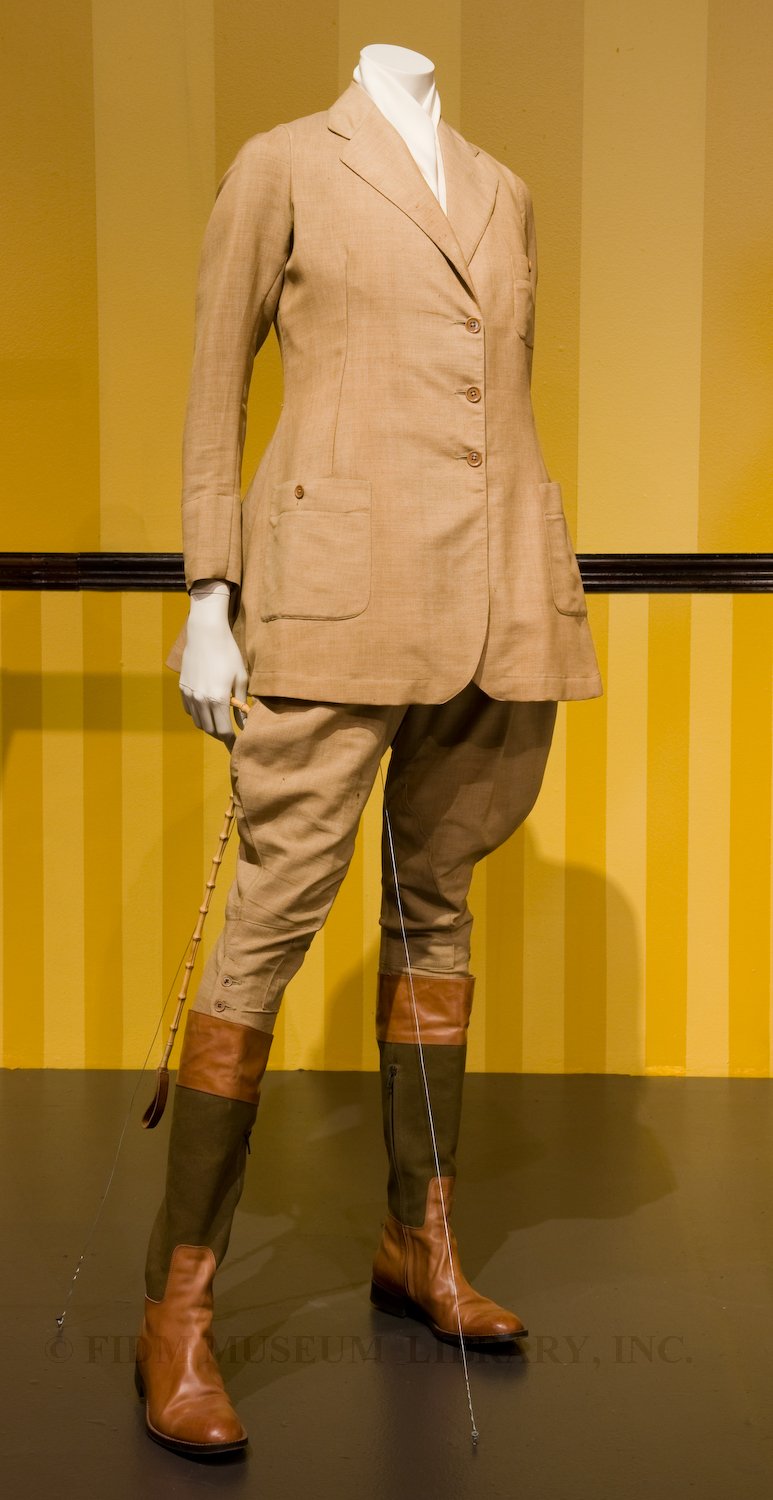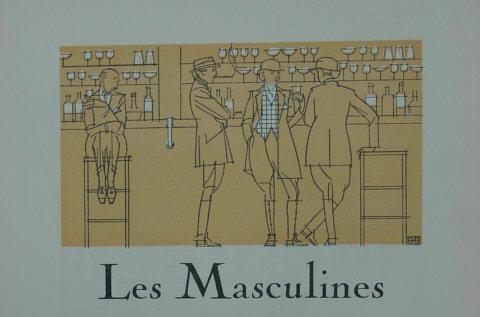In the early 20th century, women who chose to wear bifurcated garments (i.e. trousers) outside of the gymnasium or off the playing field risked public censure. Though women had been wearing full, almost skirt-like trousers for sporting activities since the late 19th century, these bifurcated garments escaped condemnation only because they were functional, not fashionable. Full trousers of this type were often called “bloomers,” after Amelia Bloomer, leader of a controversial attempt to popularize bifurcated garments as everyday dress for women during the early 1850s. Worn for activities such as bicycling, cricket, light calisthenics and swimming, bloomers allowed for freedom of movement, while obscuring the contours of the leg and lower body.
Bloomers
c. 1920
Gift of the Manlove Family
2006.870.76
Made of wool twill, these c. 1920 bloomers were probably worn as part of a school gym uniform. Not quite long enough to cover the leg, they would have been worn with opaque stockings and flat, lace-up gym shoes. The photo below highlights the waist pleats and a printed tag bearing the name of the wearer.
Another type of bifurcated garment entered the fashionable vocabulary through its acceptance as equestrian wear. Jodhpurs, a fitted trouser which ballooned at the thigh, became popular among male and female equestrians during the early 20th century. Prior to the appearance of jodhpurs, most women rode side-saddle, wearing riding habits which consisted of a voluminous skirt and a menswear inspired jacket. Jodhpurs allowed women to ride astride the horse and virtually eliminated visual differences between male and female equestrians.
 Riding habit (installation photo)
Riding habit (installation photo)
c. 1924
Gift of Eleanor Phillips Colt
95.193.1AB
Initially worn only as sportswear, some daring women adopted the riding habit as everyday dress. Unlike bloomers, which were a distinctly feminine garment, jodhpurs were almost unisex. When worn as functional sportswear, jodhpurs caused little comment. Though jodhpurs as streetwear were probably worn by only a few rebellious women, their displacement from the sporting arena was troubling. Any woman bold enough to disregard sartorial norms was almost certainly aligned with a bohemian lifestyle and possibly equal rights for women. The specter of women dressing like men raised the possibility of a time when gender divisions and gender roles would become meaningless. For many, this was a disconcerting thought.
Even La Gazette du Bon Ton, arguably the most avant garde fashion publication of its day, poked fun at women who adopted masculine garb. The image below, featuring women clad in jodhpurs socializing at a bar, appeared in 1922. Not only are the women drinking in public, but they have also driven the only male patron to huddle on a barstool. This illustration accompanied an article detailing an appreciation for women who adopted masculine dress, but only if they did so out of fashionable, rather than political ambitions. According to the author, women who “want to make everything topsy-turvy,” by changing their behavior along with their dress risk the possibility of being “treated like drunkards or risk ending their days shut up in a madhouse.”
La Gazette du Bon Ton, No. 4, 1922
Illustration by Bernard Boutet de Monvel
Courtesy of the FIDM Museum Special Collections



